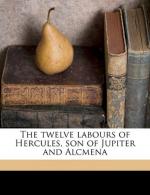|
This section contains 1,003 words (approx. 4 pages at 300 words per page) |

|
Because Jupiter has always been seen by the naked eye, no history of discovery exists for it. At certain periods, it is brighter than any other celestial object except the Sun and Venus. Certain facts concerning the planet, however, have been discovered by a host of astronomers.
The most well-known feature of Jupiter, its reddish colored cloud bands, were discovered as early as 1664. Credit for their detection has been given to several scientists, including Italians Niccolo Zucchi and Gian Dominico Cassini, Englishman Robert Hooke, and Belgian Gilles-François Gottigniez. Cassini determined the planet's rotation as 9 hours and 56 minutes, a surprisingly short period for such a huge planet. He also found the planet flattened by the ratio of 1/5, meaning the distance from pole to pole was significantly different from the equator's diameter.
After these initial calculations Jupiter was largely ignored, due in part to the spectacular discovery of...
|
This section contains 1,003 words (approx. 4 pages at 300 words per page) |

|


